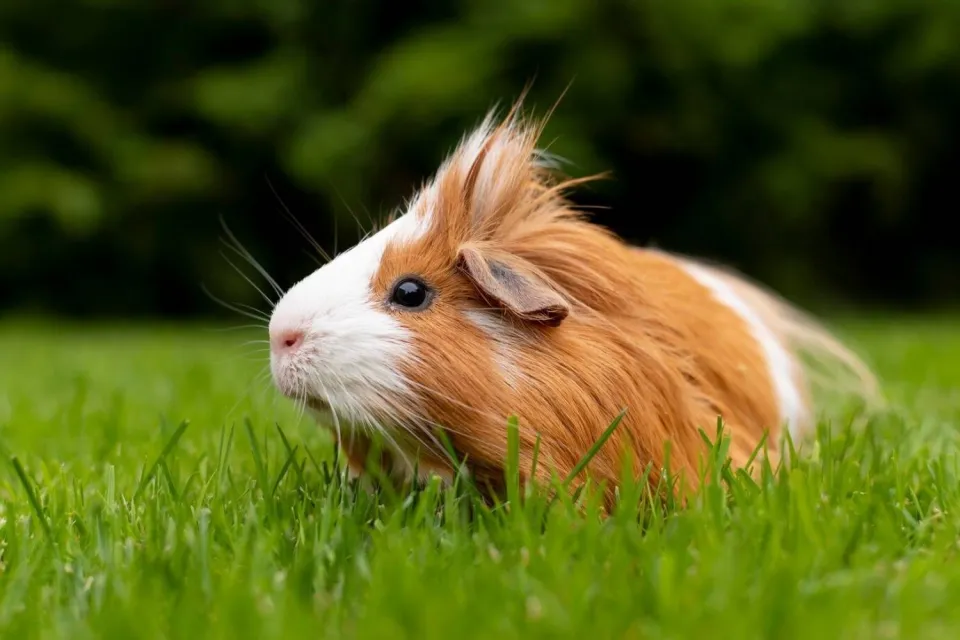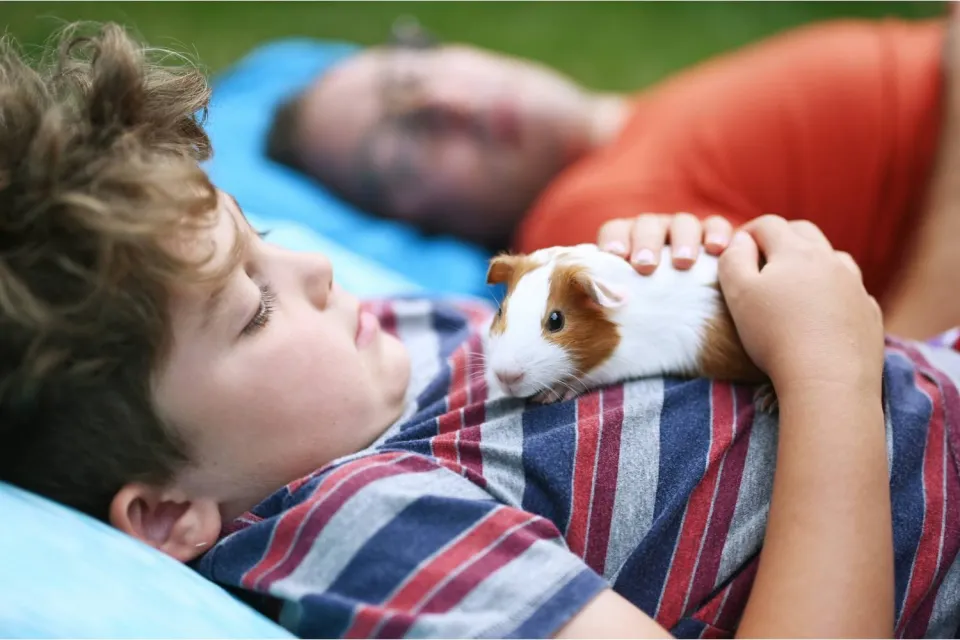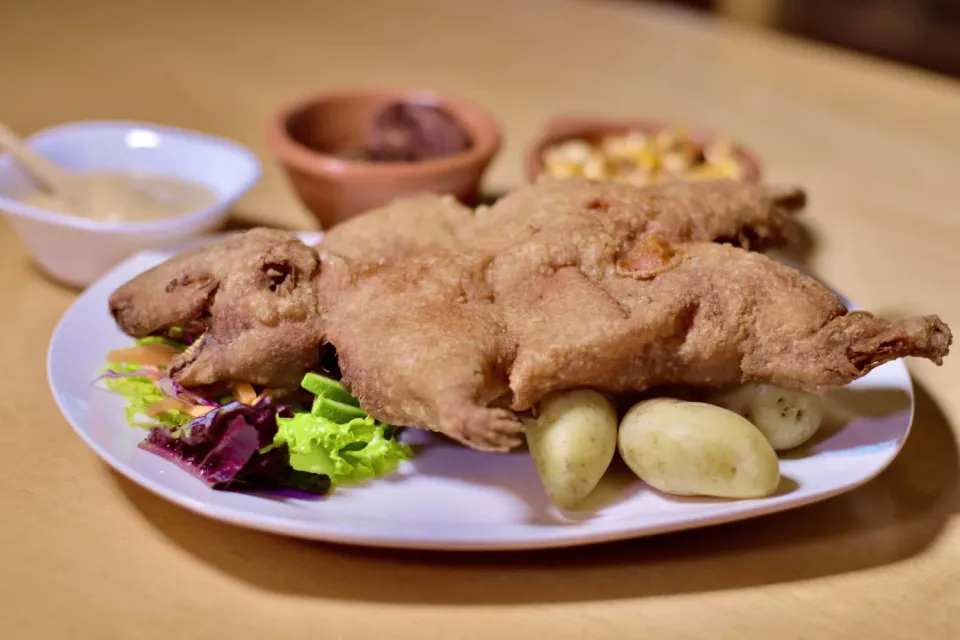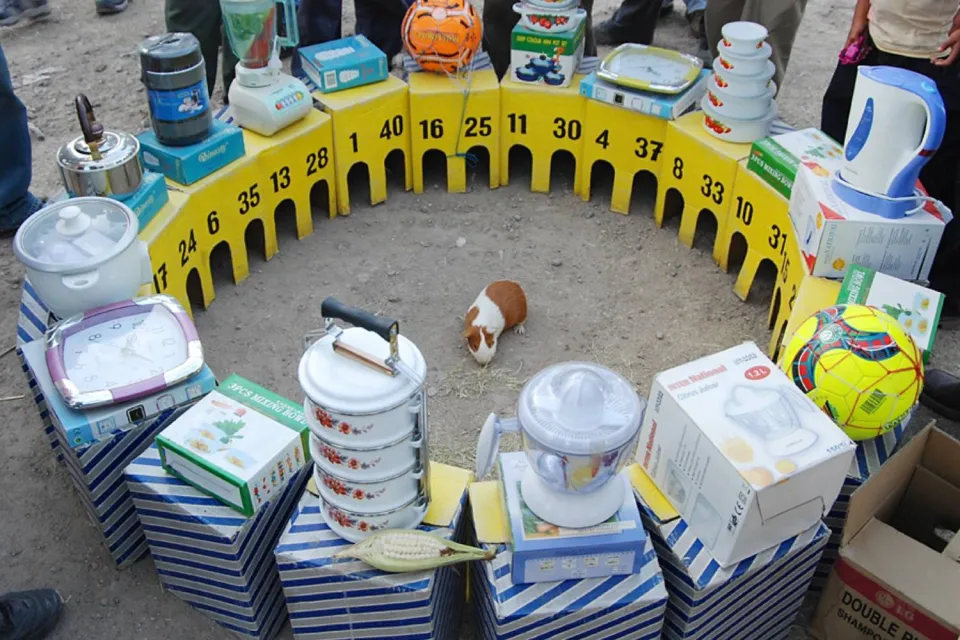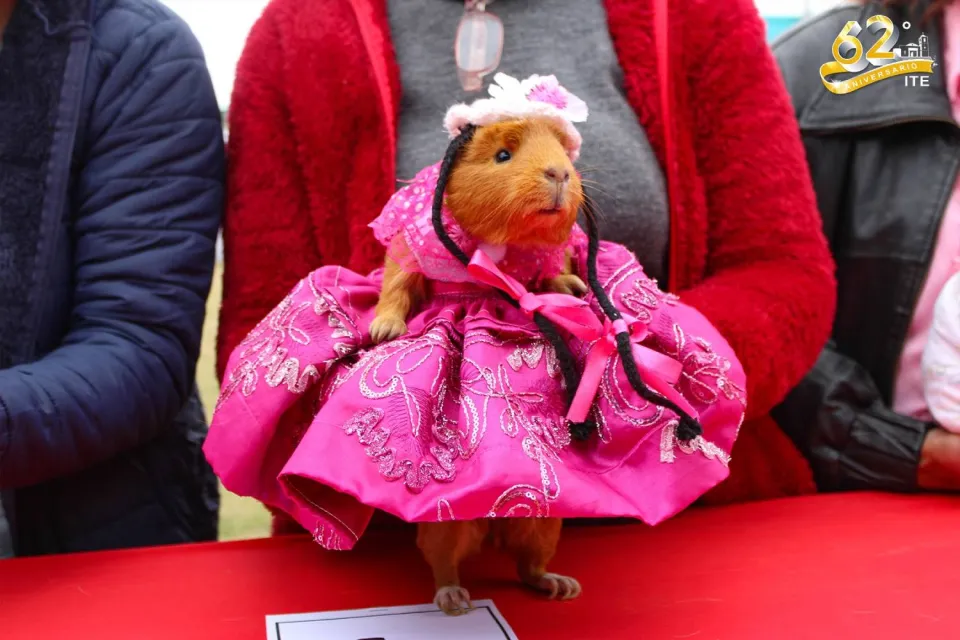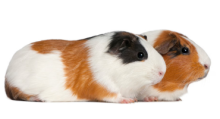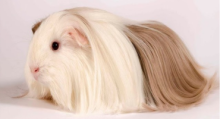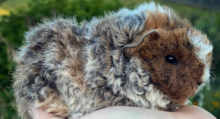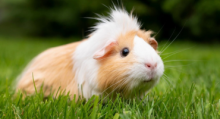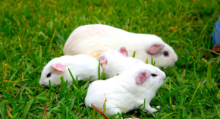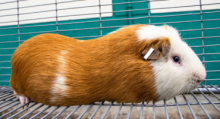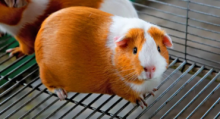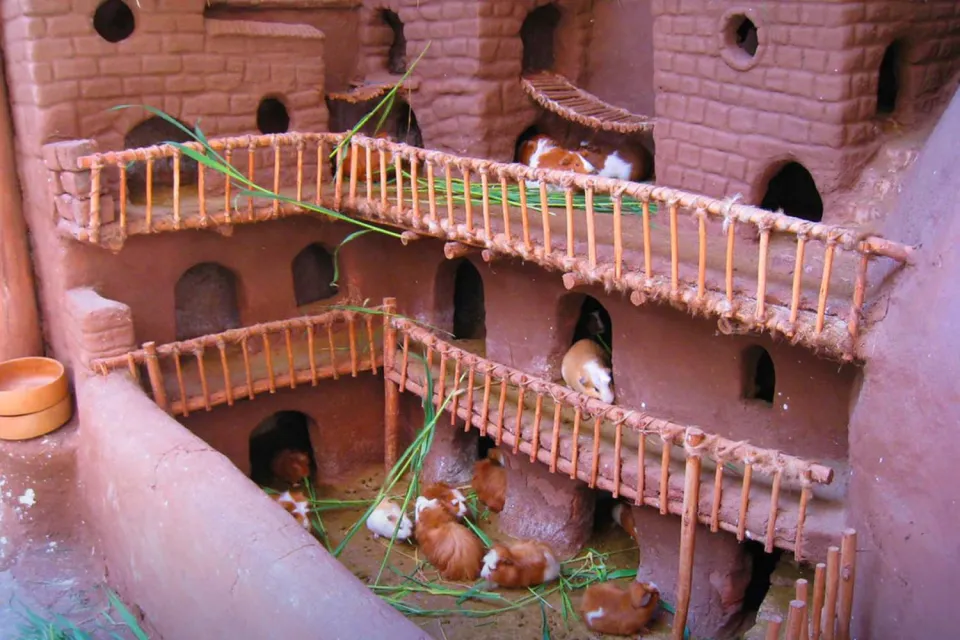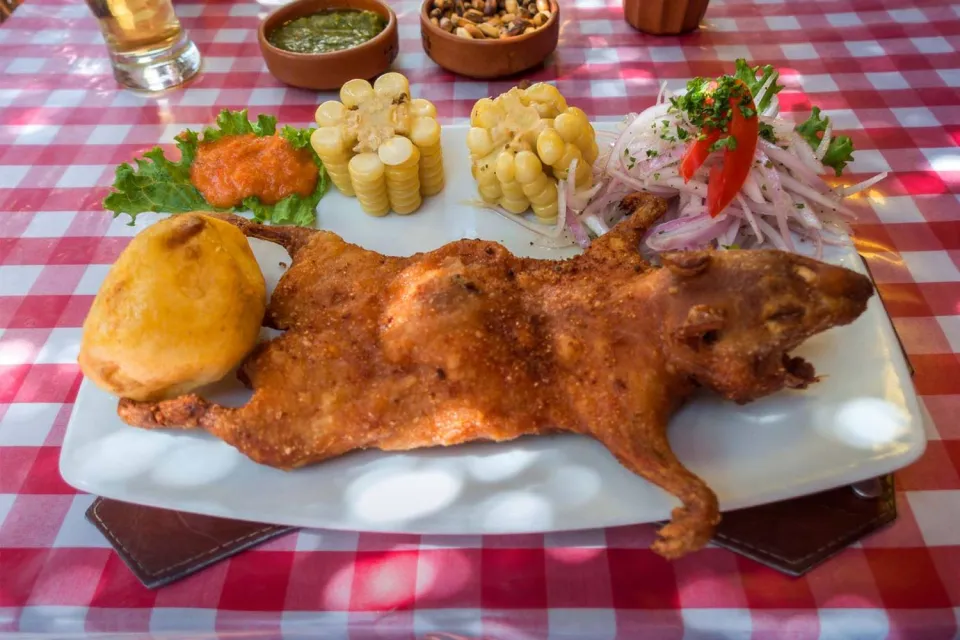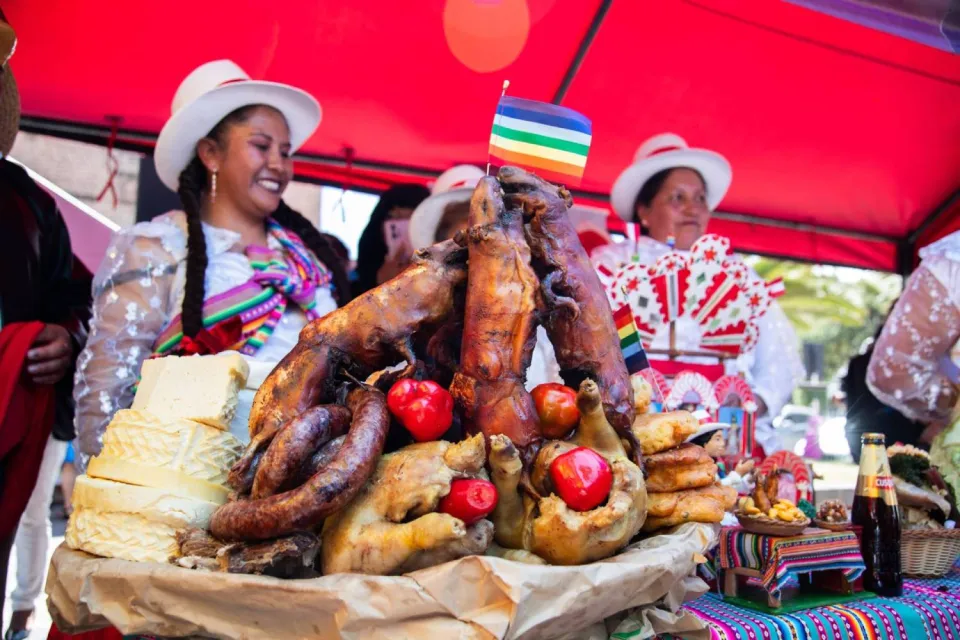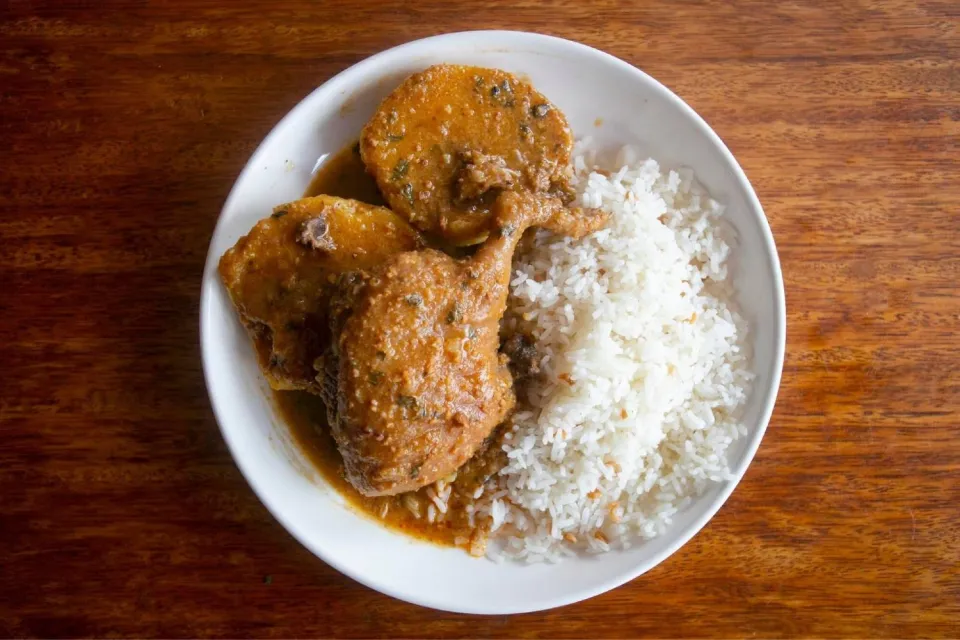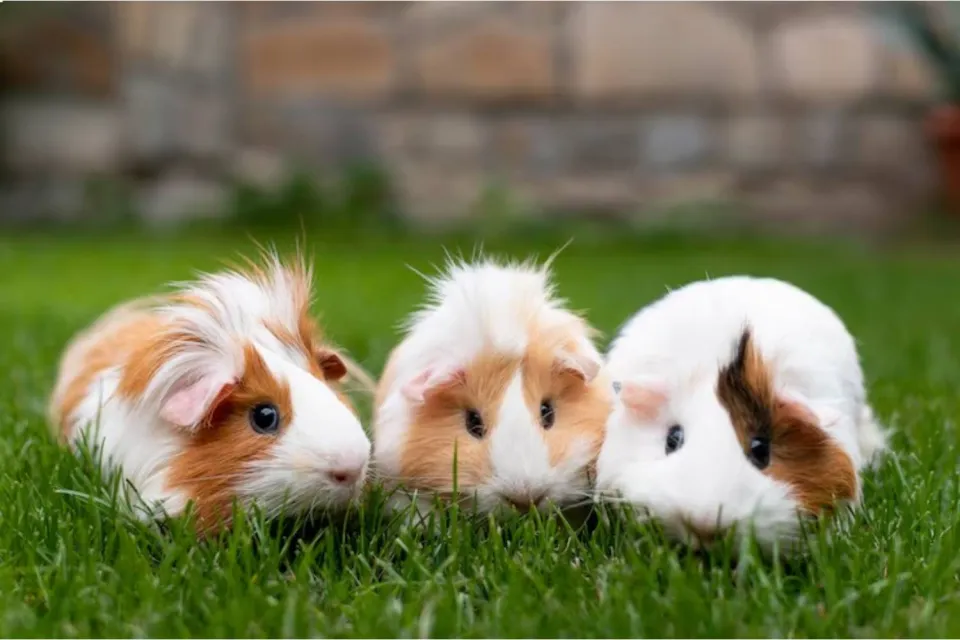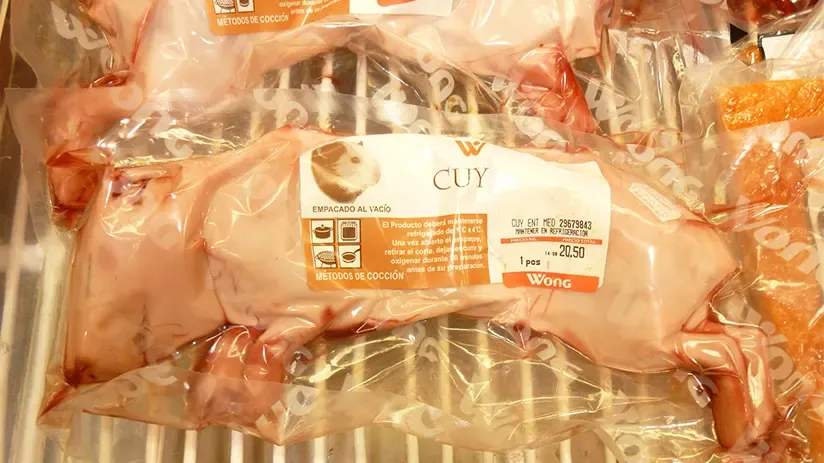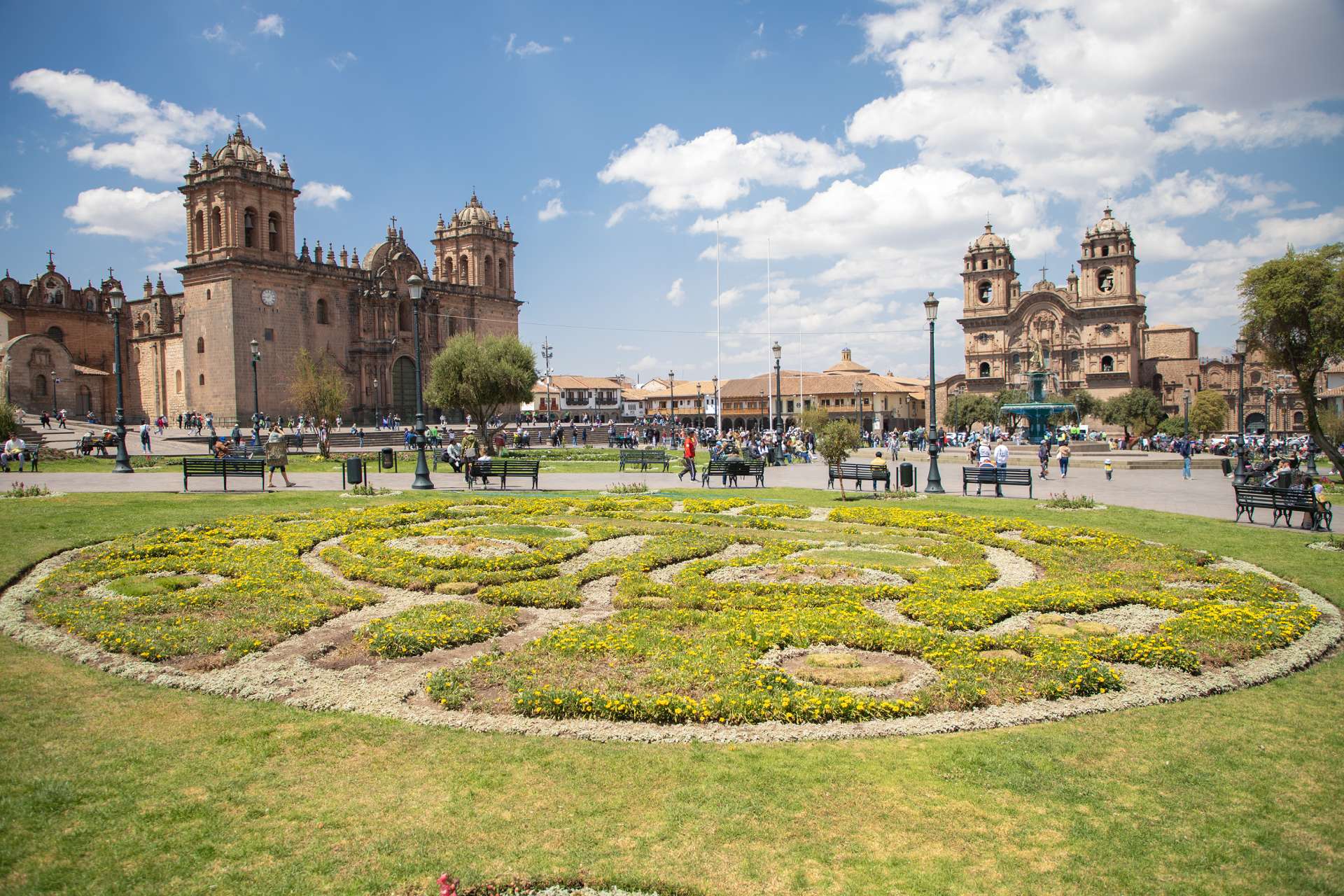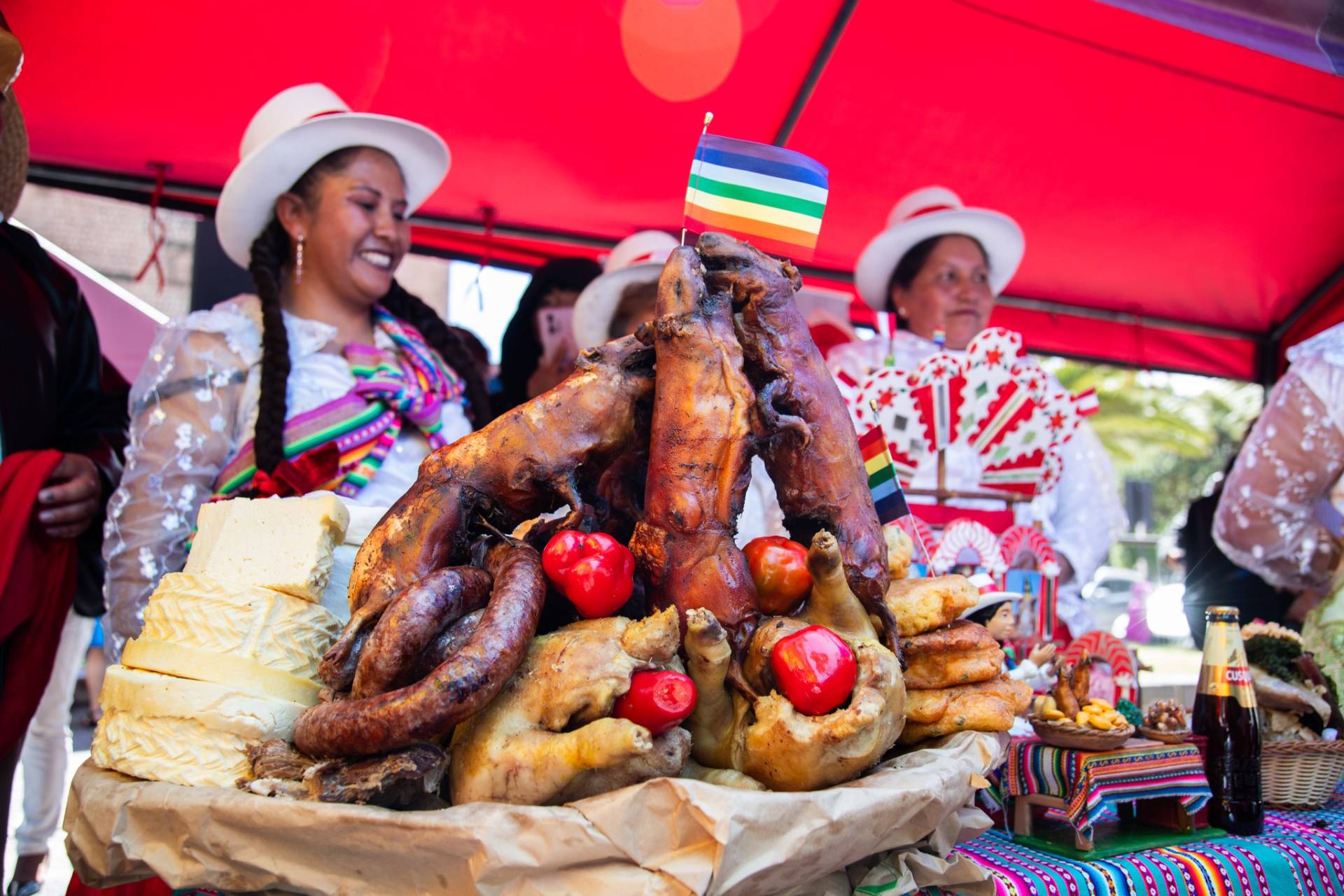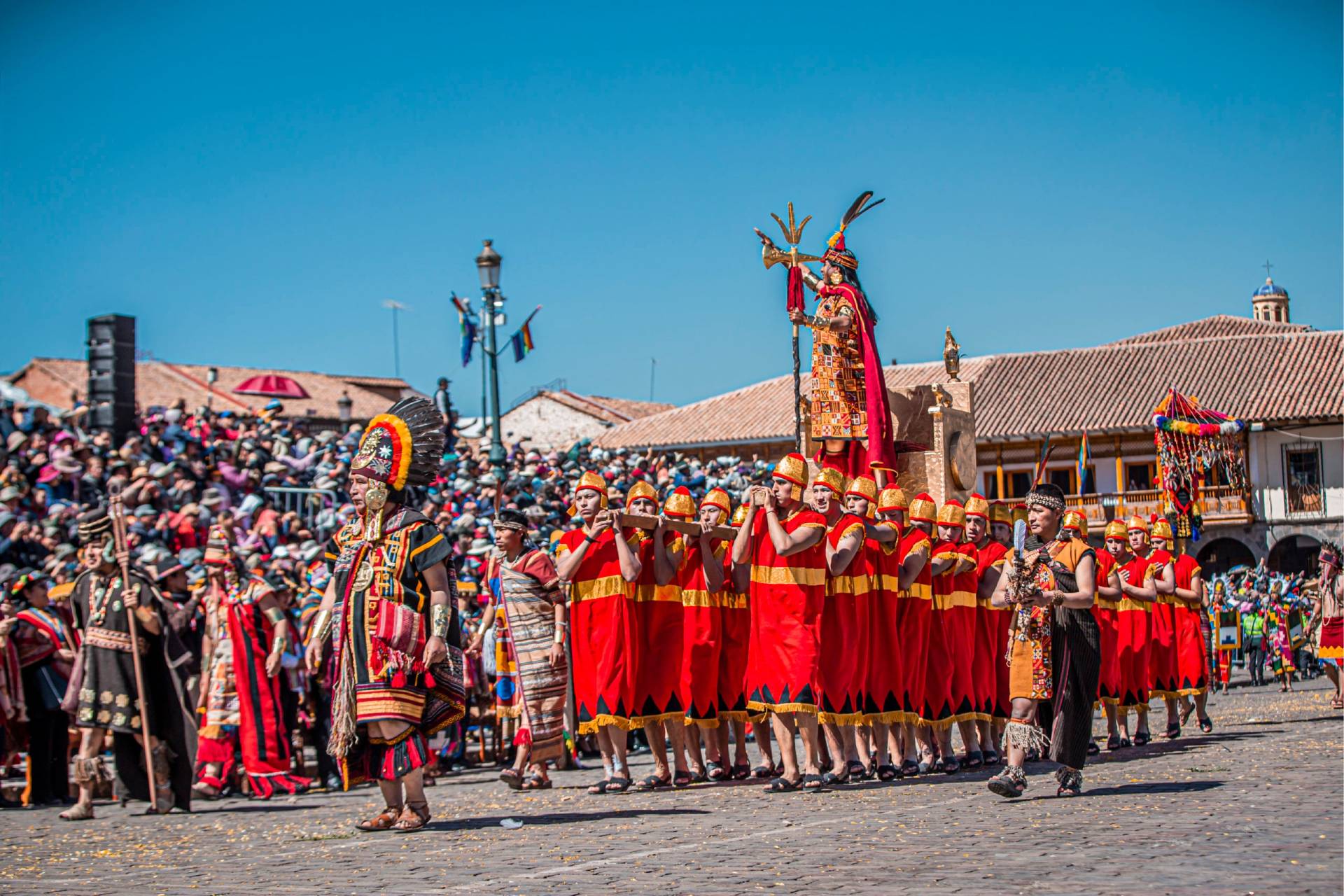The Peruvian guinea pig survived the Incas, crossed oceans and today is a star of haute cuisine.
Just as you read it. This small Andean rodent has gone from being an offering for the Apus to starring in luxury dishes in Lima. Its history mixes rituals, science, prophecies and fashion shows (yes, you read that right).
If you think that Peruvian guinea pig is “rare” or “exotic”, wait until you know its true meaning. Because behind that crunchy taste there are 10,000 years of living culture.
What is the Peruvian guinea pig?
The word "cuy" comes from the sound emitted by this small animal: "cui-cui". It is a rodent native to the Andean region of South America, especially in countries such as Peru, Bolivia and Ecuador.
In Peru, the guinea pig has been part of daily life since pre-Inca times. Its presence goes beyond the domestic: it has a profound cultural and historical importance, as it has participated in religious rituals and healing ceremonies for centuries.
Today, the Peruvian guinea pig has two main functions:
- Companion animal, especially in rural households.
- Traditional food, present in festivities and family gatherings.
In Peru, the guinea pig is both pet and food. For many, this duality does not represent a contradiction, but a living expression of their culture.
Names of the guinea pig
People call the guinea pig by different names depending on the country or region:
- Cuy: term used in Peru and Bolivia.
- Cobayo: in Colombia and Venezuela.
- Curi doméstico, guaneo or sucuy: in Peruvian Andean communities.
- Guinea pig: in Spain.
- Guinea pig: in English-speaking countries.
- Jaca: in South Africa.
- Cavia porcellus: its scientific name.
In addition to its cultural importance, the guinea pig has played a key role in science. Researchers chose it as one of the first animals for biomedical experimentation.
To this day, it continues to be fundamental in genetic and medical studies, due to its rapid reproduction and certain biological similarities with humans in physiological and metabolic processes.
A pet with personality
In many homes, especially in the Andean highlands, guinea pigs run freely in kitchens or backyards. Children grow up playing with them. They are loved, named and cared for.
Why keep them as pets?
- They don't need much space.
- They eat leftover vegetables.
- They are part of the natural cycle of the household.
But, unlike cats or dogs, guinea pigs are not kept forever. Families raise them for special occasions, honoring their role as both companion and food.
A ritual that is still alive
Today, the guinea pig is still part of Andean spirituality. It is still used in rituals such as:
- Offerings to Pachamama, Mother Earth.
- Symbolic readings, together with coca leaves or other elements.
- Traditional medicine practices.
Therefore, eating guinea pig is not only a nutritional action. In many communities, it is also a spiritual act of respect and connection with the ancestors.
From sacred animal to national dish
Over time, the role of the guinea pig has evolved. Although it is still considered special, it also became one of Peru's most representative dishes.
Why did it become a popular food?
- It is rich in protein and low in fat.
- It has a high reproduction rate.
- It breeds easily in rural areas and in varied climates.
- It was adopted in banquets and celebrations as a symbol of abundance.
Today, guinea pig is still a dish reserved for special occasions: parties, important visits or family celebrations. It is not an everyday food, but a symbol of identity and tradition.
History of the Peruvian guinea pig
Origin
The guinea pig was domesticated in the Andean area of present-day Peru more than 10,000 years ago, long before the rise of the Inca Empire.
The first inhabitants of Ayacucho built small traps to capture them. They then locked them in improvised cages inside rock shelters, where they consumed them. Traces of this behavior have been found dating back to 8000 BC.
Domestication came some time later. In the Temple of the Crossed Hands, in Kotosh (Huánuco), evidence was found suggesting the breeding of wild guinea pigs such as Cavia aperea and Cavia tschudii.
Ancient Andean cultures, such as the Chavín, began to breed them for their nutritional benefits. In addition, guinea pigs could adapt without difficulty to the altitude and climate conditions of the Andes.
Pre-Inca cultures
Several pre-Inca peoples already recognized the symbolic and nutritional value of guinea pigs:
- Mochicas: they immortalized these animals in their pottery and used them in funerary contexts.
- Nazcas: they represented guinea pigs in their iconography and included them in burials. Waris: they built large "guinea pig houses" around their temples for selective breeding.
- Paracas (300-250 B.C.): unlike other predominantly highland cultures, this coastal culture incorporated guinea pigs into their daily diet.
These findings prove that the guinea pig was not exclusive to the highlands; its breeding and consumption also extended to other regions.
Inca period
During the Inca Empire, the guinea pig became even more important. Not only was it a source of food, it also became a spiritual and ritual symbol.
The Incas attributed healing powers to the guinea pig, so they raised it only in special places. Healing powers were attributed to it, so it was only bred in special places.
Eventually, a community near the Junín lagoon began to breed them in their homes. This act marked the beginning of its integration into family life. Since then, each ayllu (Andean family unit) adopted the guinea pig as part of their daily life.
They believed that guinea pigs acted as messengers between humans and the Apus (sacred spirits of the mountains).
Colonial times
During the 16th century, Spanish conquistadors brought guinea pigs to Europe. Historians have not determined with certainty whether the conquistadors transported them as food during their travels or as pets. What is certain is that, in a short time, the guinea pig became an exotic pet in several European countries.
Later, people also brought the guinea pig to the United States, where families still raise it mainly as a domestic animal.
Present day
Today, the guinea pig continues to play an important role in Andean rituals.
Shamans use it in healing ceremonies to diagnose illnesses or cleanse bad energies. During the ritual, the cuy is rubbed over the patient's body. If the animal dies after the process, it is interpreted as a sign that it absorbed the negative energy or evil eye.
In addition, the guinea pig is one of the star ingredients in Peruvian gastronomy. Its meat is considered a delicacy, especially in regions such as Arequipa, Cusco and Ayacucho.
Today, cuy has gained so much recognition that it even forms part of the menu of haute cuisine restaurants in Peru. It is a symbol of tradition, culture and national pride.
Rituals, festivals and ceremonies with guinea pigs
Andean Cosmovision
In the Andean cosmovision, the guinea pig is not only an animal. It is a sacred being that connects the physical and spiritual worlds. Shamans use it in traditional ceremonies to diagnose illnesses, detect bad energies or identify if a person has been the victim of a spell.
These practices are not new. Since pre-Incan times, people believed that the cuy could absorb negative energies and reveal imbalances in the body. By rubbing it on the patient, healers would interpret his reaction - and even his internal organs, in case of sacrifice - to identify the evil and seek a cure.
Object of prediction
n addition to its spiritual use, people also use the guinea pig as a predictive tool in more playful or symbolic contexts. One of the most curious examples is the guinea pig tombola, a popular game in some regions of Peru.
What does it consist of? People place the guinea pig in a closed box and arrange several small houses in a circle around it. Each one represents a betting option: it could be the outcome of a soccer match, a political election or even a weather event.
They then release the guinea pig from the center and, after it observes its surroundings, it enters one of the small houses. Sometimes there is even a small house with a “tie” option. Observers interpret the option the guinea pig chooses as the “winner”.
But this is not its only predictive use. In many Andean communities, people also interpret the behavior of the guinea pig to make important decisions, such as:
- Choosing the best date to plant crops.
- Defining the right time to start building a house.
- Predicting what the weather will be like.
For many, these animals bring luck, prosperity and signs of destiny.
Cuy Fashion Contest
Yes, there is a fashion show for guinea pigs! The district of Ite, in Tacna, hosts the original and fun Cuy Fashion Contest.
The owners prepare colorful, creative and handmade costumes to dress their pets with dedication. The guinea pigs model on improvised catwalks in front of a happy and enthusiastic audience. There are prizes for the best costumes, which motivates participants to plan their outfits months in advance.
This event not only celebrates the guinea pig as a cultural symbol, but also demonstrates the affection that Peruvians feel for this little animal.
Peruvians value the guinea pig so highly that artists even included it in a version of the Last Supper, where Jesus shares a guinea pig with his disciples. This painting is located in the Cathedral of Cusco, in the Main Square.
Peruvian guinea pig breeding
Guinea pig breeding in Peru is an ancestral tradition that has evolved over time, maintaining careful and selective practices. Peruvian breeders usually choose their guinea pigs according to their type, breed and coat, and raise them in corrals or small mud houses, especially in the rural areas of the highlands.
The guinea pigs' diet is fundamental to their development. Their diet is based mainly on fresh grass, alfalfa and vegetables such as lettuce, bean shells and other natural products. Breeders must be cautious, as one variety of alfalfa can be toxic to guinea pigs. They can easily recognize it by its small yellow flowers.
Guinea pig varieties
In Peru, guinea pigs are classified according to three main criteria: coat type, coloration and breed.
According to coat type:
- Type 1: Short-haired, straight and close to the body, sometimes with small swirls. It is the most consumed for its tasty meat and soft texture.
- Type 2: Also short-haired and straight, but with rosettes or swirls distributed all over the body. Its meat is appreciated, although slightly less than that of type 1.
- Type 3: They have long and smooth hair. They are bred mostly as pets, as their meat is not as tasty; it is said that many nutrients are concentrated in their fur. In addition, their long hair makes mating difficult.
- Type 4: They have a curly or kinky coat, which gives them the appearance of "frizzy" guinea pigs. From birth they have this type of hair, which becomes coarser and more tangled with time. They can reach large sizes and a bulging abdomen.
According to the coloration of the coat:
- Simple: They have a single color. It can be white, yellow (bay), reddish (sorrel) or black.
- Compound: They have two or more colors. They are subdivided into:
- Moors: A mixture of white with black or dark brown.
- Lobos: Combination of bay with black.
- Overos: Colors combined with white speckles. Fajados: Colors distributed in defined stripes.
- Combined: Mixed colors in irregular sections and without specific pattern.
According to breed:
- Inti breed: Large size and with a lot of meat. Ideal for consumption.
- Andean breed: Robust and adaptable to all types of ecosystems. Females can give birth to three to four offspring per litter.
- Improved breed: Developed by INIA (National Institute for Agrarian Innovation) for mass consumption. It can reach 1 kg of weight in only 8 or 9 weeks.
- Peru breed: Originates from the northern highlands of the country, especially Cajamarca. They are sorrel colored with white, banded or type 1 (short straight hair).
Behavior and characteristics of guinea pigs
- They live in groups and are very sociable.
- They constantly emit sounds to communicate.
- They have an excellent sense of direction.
- They are skittish and are always on alert.
- They can run at speeds of up to 9 km/h and jump up to 30 cm high.
- They grow quickly and reproduce easily.
- They have a wide angle of vision that allows them to detect dangers easily.
- Their excrement is used to make compost, a natural fertilizer widely used in organic agriculture.
Properties and benefits of guinea pig
Is guinea pig healthy?
Yes, guinea pig is an extremely healthy and nutritious meat. In fact, it offers benefits that surpass those of other traditional meats such as beef, pork or chicken. Its nutritional profile makes it an excellent choice, especially in balanced or therapeutic diets.
These are some of its benefits:
- High protein content, even higher than chicken, beef or pork.
- Low in cholesterol and saturated fats, ideal for people with cardiovascular problems.
- Rich in omega-3 and omega-6 fatty acids, which promote heart and brain health.
- Important source of vitamin B12, iron and zinc, essential for the immune system and the formation of red blood cells.
- Helps fight colds, throat infections and respiratory diseases.
- Recommended for people with physical weakness, sties, insomnia or lack of energy.
For these reasons, many health organizations in South America recommend its inclusion in daily diets, especially in rural areas where access to other types of meat may be limited.
Is it sustainable?
Yes, guinea pig is one of the most sustainable meats available, which makes it an ideal choice to address the challenges of climate change and food security.
- It requires less land and water to raise compared to cows or pigs.
- It emits less greenhouse gases, which reduces its ecological footprint.
- It feeds on kitchen and vegetable scraps and does not require industrial feed.
- It reproduces quickly, which guarantees a constant and low-cost production.
Thanks to these characteristics, sustainable food systems—especially in Andean communities—consider the guinea pig an ideal meat source and prioritize it in their environmentally friendly practices.
Guinea pig as a dish of Peruvian cuisine
Guinea pig is an essential part of traditional Andean cuisine. Cooks across Peru prepare guinea pig in many ways that vary by region, but in every case, the dish reflects identity, history, and flavor.
1. Cuy chactado or fried guinea pig
In Arequipa, people consider cuy chactado the star dish and offer it in almost all tourist restaurants. To prepare it, cooks carefully clean the animal (removing the fur and viscera), open it in half, and crush it until it spreads flat.
They then season it with salt, garlic, and local spices. Cooks fry the guinea pig in plenty of hot oil until the skin turns golden brown and crispy. Locals usually place a heavy stone on top of the guinea pig while it is frying, so that it is flat and crispy.
They serve it with boiled (and then fried) potatoes, corn, and zarza criolla.
2. Baked guinea pig
This is one of the most representative dishes of Cusco. Cooks thoroughly clean the guinea pig and marinate it with herbs and spices such as garlic, cumin, and aji colorado. They then bake it—traditionally on hot stones or in a wood-fired oven—until the skin turns golden brown and crispy.
They serve it with boiled potatoes and a fresh salad. The meat is tender, juicy and with an intense flavor.
3. Chiriuchu
Cusqueños serve this traditional dish exclusively during the Corpus Christi festival. They include guinea pig as one of the main ingredients, along with chicken, chorizo, cheese, cancha serrana, dried seaweed, corn tortilla, and more.
The preparation takes hours and requires an ancestral recipe. They bake the guinea pig in the oven as part of the set, and they consider this dish Cusco’s signature plate.
4. Spicy guinea pig
Cooks in the Andean regions of northern Peru prepare this popular dish with a spicy sauce made from peanuts or chili.They first fry the chopped guinea pig, then add it to a thick and well-seasoned sauce.
They serve it with white rice and boiled potatoes — a perfect choice for those who enjoy intense and spicy flavors.
5. Guinea pig in peanut sauce
Traditional from regions such as Ayacucho and Huancavelica. Cooks clean the guinea pig, fry it until golden brown, and then cover it with a creamy sauce made from roasted peanuts, yellow chili, garlic, onion, broth, and spices.
The result is a soft dish to the palate, very nutritious and with a comforting flavor. They serve it with cassava, potatoes, corn, and white rice.
6. Pepián de cuy
This Andean stew combines guinea pig with ground corn. Cooks fry the pieces of the animal until golden brown. They then prepare the pepián with corn flour, red hot bell pepper, garlic, onion, and guinea pig broth.
They add the pieces to the stew so they absorb the flavors. They serve it hot, with potatoes or rice, and sometimes decorate it with hard-boiled egg and chopped parsley. It is an ancestral, nutritious and very tasty dish.
7. Stuffed guinea pig baked in the oven
One of the most visual and festive dishes. Cooks stuff the whole guinea pig with a dressing of onion, garlic, aji panca, Andean herbs (such as huacatay), peanuts, quinoa, and even hard-boiled egg or ground meat.
After stuffing it, they sew or tie it to keep its shape and bake it slowly until the skin turns golden brown. They serve it with native potatoes, fresh salad, and sometimes hot sauce. It is common in family celebrations or patron saint festivals.
What does Peruvian guinea pig taste like?
Many visitors ask this question. The answer? Its flavor is unique: a mix between rabbit and chicken, with a firmer texture and a slight fatty touch. Others compare it to duck for its intensity.
The skin is crispy when cooked well, and the meat is flavorful. It does take some practice to eat it, as it has small bones, but the locals do it with skill.
Can you eat guinea pigs?
If you come from a culture where guinea pigs are just pets, the idea may seem strange to you. But in Peru, eating guinea pig is:
- An ancient cultural tradition
- A way to honor the ancestors and the land
- A respected and valued practice, not cruel
- Just as cows are sacred in India, but are eaten in other parts of the world, the meanings of food vary according to culture.
Therefore, it is possible to eat guinea pig, as long as it is done with respect, understanding and an open spirit towards cultural diversity.
Where can you taste Peruvian guinea pig?
If you visit Peru, you will find cuy in various cultural and gastronomic contexts. Some of the most common places are:
- Local restaurants in regions such as Cusco, Arequipa and Puno
- Rural festivals and special events, where it is cooked in large quantities to share
- Family homes in Andean villages, where the raising and preparation of cuy is part of everyday life
Look for signs advertising “Cuy al Horno” or “Cuy Chactado”. You will also see modern proposals in some signature cuisine restaurants, which present cuy in new forms, such as:
- Cuy confit
- Cuy croquettes
- Cuy in haute cuisine tasting menus
These contemporary approaches offer an opportunity to rediscover cuy with refined techniques, without losing its ancestral essence.
Tips for a respectful and enjoyable experience
- Keep an open mind: Guinea pig is an ancestral food, consumed long before the arrival of Europeans. Approach it with curiosity and without prejudice.
- Photograph with respect: If you take photos of the dish or its preparation, avoid mocking or offensive gestures.
- If you are in a family home, ask before photographing. If you don't want to try it, refuse with respect: Not everyone is encouraged to eat guinea pig, and the locals understand this. Thank them politely and avoid derogatory comments.
More than a food
The Peruvian guinea pig is not only a rodent, not only a typical dish, not only a tradition.
- It is a symbol.
- A living connection between the past and the present.
- Between the people and their land.
- Between the everyday and the sacred.
- Between the pet and the food.
So, the next time you hear about cuy in Peru, remember: behind that small animal there is a deep, millenary and culturally rich history. And if you have the opportunity to try it, do it with an open mind and a grateful heart.
Frequently Asked Questions
- Is it safe to eat guinea pig?
Yes. Eating guinea pig is safe, as long as it is well prepared. Choose places where hygiene and cooking are careful to avoid stomach discomfort.
- Where can I buy guinea pig?
You can buy live guinea pigs at agricultural fairs or events such as Expo Feriado. If you are looking for guinea pig for consumption, you will find it in supermarkets and markets in Andean cities such as Cusco, Huancayo or Arequipa.
cuy ready to be sold - Where to eat guinea pig in Cusco as a tourist?
The best places for tourists are traditional restaurants like Pachapapa or La Cusqueñita, where the preparation is safe and well executed.
You can also try it during the Chiriuchu fair in Corpus Christi. The vendors there pass sanitary inspections to guarantee quality.
- What are the differences between domestic and wild guinea pigs?
The domestic guinea pig is raised by people and is usually larger. The wild guinea pig lives free in the wild, is smaller and is not consumed as food.
- Why do some people call guinea pigs “poronccoy”?
People commonly use the term 'Poronccoy' to refer to baby guinea pigs that have just been weaned
- How much does a plate of guinea pig cost in Peru?
- At fairs or markets: between 30 and 45 soles.
- In tourist restaurants: between 50 and 90 soles.
- In gourmet restaurants in Cusco: from 100 to 180 soles, depending on the presentation.
- Do Peruvians eat cuy every day?
No. Guinea pig is usually eaten on special occasions, such as birthdays, family celebrations or religious festivities, such as Corpus Christi in Cusco, where it is part of the chiriuchu.
- Is it allowed to export guinea pigs or raise them outside Peru?
Yes, but you need:
- An export permit issued by SENASA
- A health certificate signed by a veterinarian
- CITES authorization if the destination country requires it.
- How long does a guinea pig live?
A guinea pig can live between 4 and 8 years, as long as it receives adequate care such as good food, hygiene and a safe space.
- What is a guinea pig like as a pet?
Guinea pigs are gentle, sociable and easy to care for. They are ideal as pets, especially in European or North American homes. They need companionship, a proper diet and clean space.
- What drink goes well with guinea pig?
You can accompany guinea pig dishes with beverages such as:
- Semi-dry red wine
- Pisco sour
- Chicha de jora
- Craft beer
- Herbal infusions
- Homemade lemonade.
- How is a guinea pig raised?
In Peru, guinea pigs are raised in corrals or mud houses. These spaces must be cleaned at least once a week. They feed on alfalfa, vegetables and vegetable scraps. They also need clean water, so a drinking trough is recommended.
- How much does it cost to raise guinea pigs?
Raising guinea pigs is an affordable investment. They do not require much space and their feed is economical, since they eat grass, potato peels, lettuce and other vegetable scraps.
- Is there a guinea pig day in Peru?
Yes, in Peru, people celebrate the Day of the Cuy to honor the cultural, economic, and gastronomic importance of this Andean animal. They observe it every second Friday of October, so in 2025, the celebration will take place on October 10.

